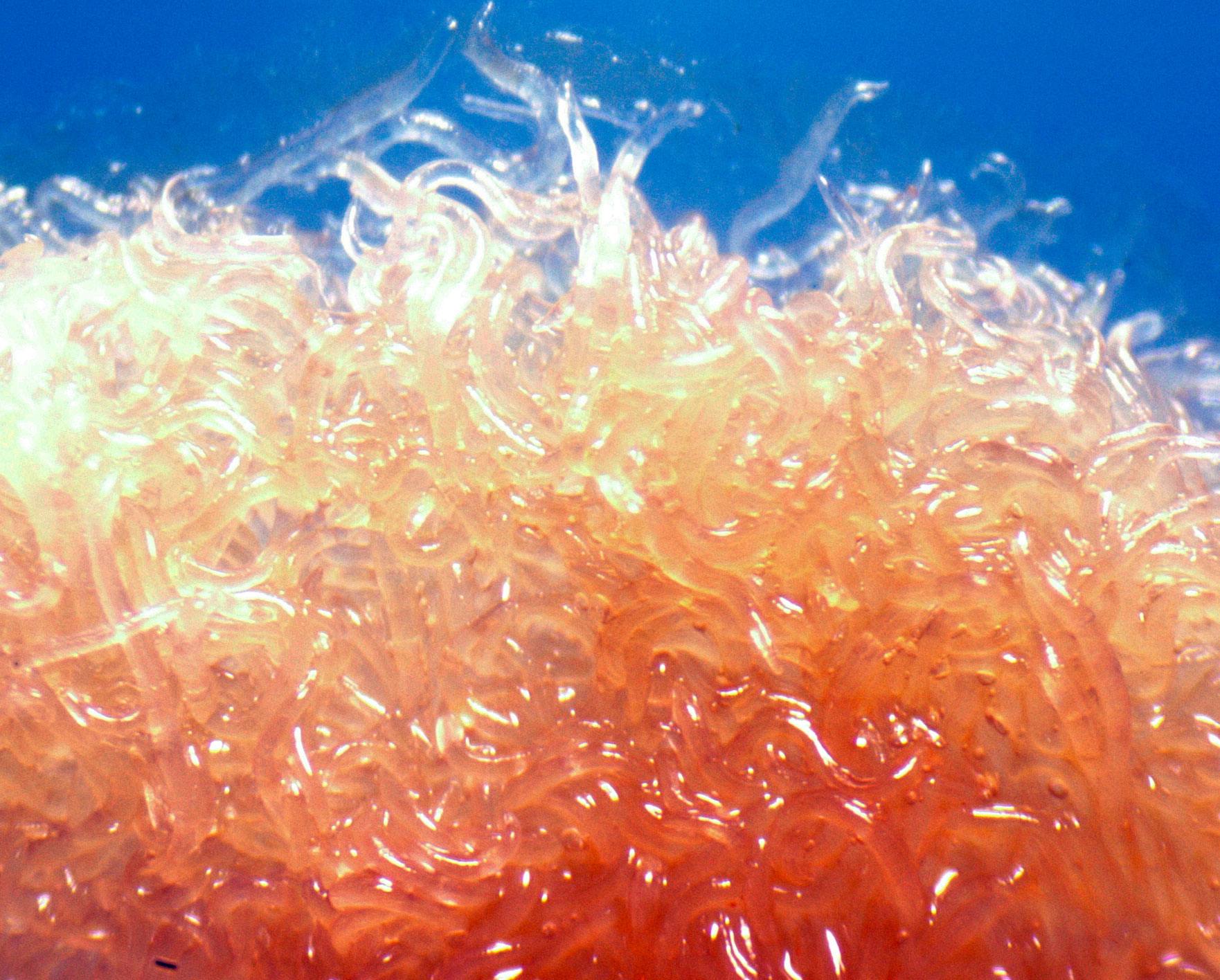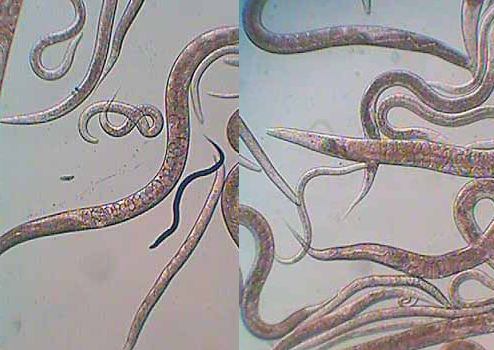Microworms
Systematics
Phylum Nemathelminthes (tubeworms)
Class Nematodes (nematodes; at least 1,000 species)
Order Rhabditoidea (= Anguilluloidea)
Family Cephalobidae
Genus Panagrellus
Species redivivus(syn. silusiae)


The closest relatives of the microworms among the common food organisms (according to recent literature Panagrellus sp.) are our vinegar worms. They vary in their suitability as food for young fish, as not all young fish like to eat them. In addition, as with all worms, the fat and collagen content is quite high. However, they are simply part of a varied diet for young fish. They are only slightly larger than Artemia nauplii and can therefore be eaten by many fish species immediately after hatching.
However, microworms do not actively swim in the water and should therefore only be fed in quantities that are eaten immediately. Worms that have sunk to the bottom die after a while and can spoil the water if given in large quantities.
In a well-running batch, the worms crawl up the wall of the container in masses and can easily be removed cleanly with a brush or the back of a knife.
The notorious strong odour does not occur if the correct procedure is followed. It is a characteristic of overaged and dying preparations. There are more than enough recipes for micro-attachments. Nevertheless, I am sharing my version here, as it works well and without any problems.
The basis is an oatmeal porridge; the oatmeal is soaked in enough water to produce a porridge of medium consistency after swelling (~ 15 min). Stir a portion of an old micro-preparation into this and fill it into a jar to a height of approx. 2 cm, which is sealed with a perforated lid. To make the worms more nutritious for the young fish, I always add a few drops of a vitamin preparation.
If you use oatmeal instead of rolled oats (dried rolled oats ground in a blender or electric coffee grinder), you can save the time the rolled oats need to swell and immediately achieve the right consistency (tip from Helmut Walter, Pfinztal-Berghausen).
The reproduction rate of the worms in a new batch is particularly high if you initially stir in a pea-sized piece of fresh yeast and a quarter teaspoon of sugar per jar.
With microworms it is hardly necessary to cultivate more than one batch, because even under unfavourable circumstances it is almost impossible to kill a batch completely. Even in old, smelly and dried out batches there are still enough worms to start a new batch.
Mini microworms
Now known as Walterworms in the English-speaking world and quite widespread.
Helmut Walter, Pfinztal-Berghausen (AK Lebendfutter Schwaben) was able to isolate and cultivate a micro-worm species from a grindal culture that is much smaller than the commonly cultivated varieties and also reproduces very easily and quickly, making it a real enrichment of the live food supply for young fish.
It is best to work on the basis of the method described above, whereby they should be kept much more "liquid" for optimum reproduction. The classic micros are already "drowning" under these conditions. Cultivation in boiled and/or milk-spiked preparations works poorly.
The old variant reaches a maximum length of 3 (4) mm, whereas the new variant reaches a maximum length of 1 - 2 (max. 3) mm.
Another important difference for use is that this type of nematode remains alive under water for 24 - 48 hours, whereas the "normal" micro ones die after 6 - 8 hours, and are therefore suitable for a certain amount of stock feeding.

